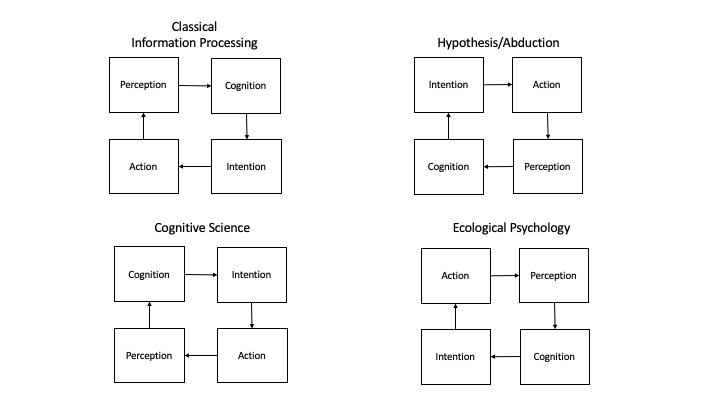
With respect to the logic of block diagrams, the four diagrams above are all identical. Thus, the similarities illustrate that the four paradigms all accept that cognition involves a circular coupling among the various component processes. Despite this consensus, there are striking differences about how the four different paradigms view the dynamics of cognition. This is reflected in which components are considered to be 'driving' the forward loop and which components are considered to be consequences in the feedback loop.
Classical Information Processing - tends to start with perception as the stimulus that leads ultimately to a choice (decision) that sets the goal for action. This reflects the residuals of a stimulus-response model. In this model, the function of cognition is to generate a 'plan' that directs action.
Cognitive Science - tends to focus on the internal cognitive processes (e.g., mental models or schema) and the associated intentions as the 'central processor' where all the interesting action happens and tends to treat perception and action as peripherals. In this approach, the mind is a disembodied computational system and focus is on the brain as the central controller of human performance.
Hypothesis/Abduction - reflects the long neglected pragmatic perspective associated with Peirce, James, and Dewey. This perspective starts with action as a 'guess' or 'test of a hypothesis' - that is measured against the practical consequences that follow. If the hypothesis leads to satisfying consequences the 'idea' or 'habit' is strengthened, otherwise an alternative hypothesis is considered. Note that while this has clear similarities with behaviorism - the key difference is that 'ideas' are strengthened - not mindless actions. These ideas reflect an ability to generalize about the world in ways that lead to improved fitness. A key distinction from traditional cognitive science is that cognition makes sense of the relation between action and consequences after the fact. Cognition is part of the feedback loop. Mercier and Speber (2007) have more recently made the case that reasoning is a post hoc phenomenon for making sense of our behavior.
Ecological Psychology - reflects the intuitions of JJ and EJ Gibson. They focused on the coupling of perception and action as the central issue for psychology - and delegate cognition and intention to the periphery. This is the central thesis of JJ's theory of direct perception which posits that there are structures in the perceptual array that directly specify the possibilities and consequences for action (i.e., the affordances) without the need for interpretation or mediation via mental models. This is also reflected in EJ's theory of perceptual learning in which expertise results from perceptually tuning to the relevant perceptual information, rather than in storing memories and constructing mental models.
For me, the key is to recognize the circularity of the coupling among the various components. Once this is recognized, the contradictions and points of contention among the various approaches take on a quite different flavor. Once it is recognized that all of these different approaches are talking about the same circle - then it becomes easier to appreciate the value of each perspective, to discover the common ground, to pull the signals from each of the four perspectives, and to filter out some of the debates and arguments that unproductively circle the same tree over and over.

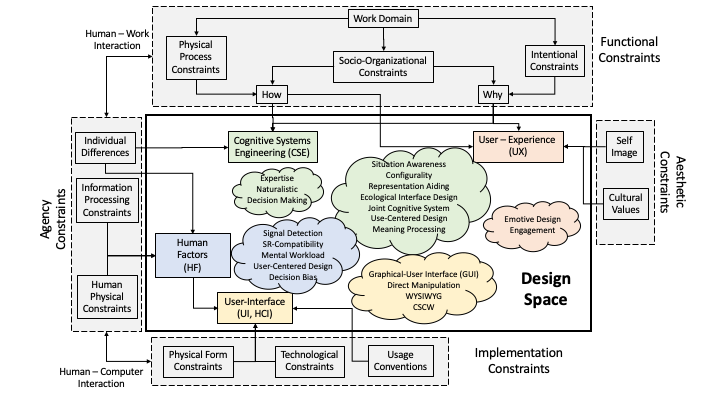
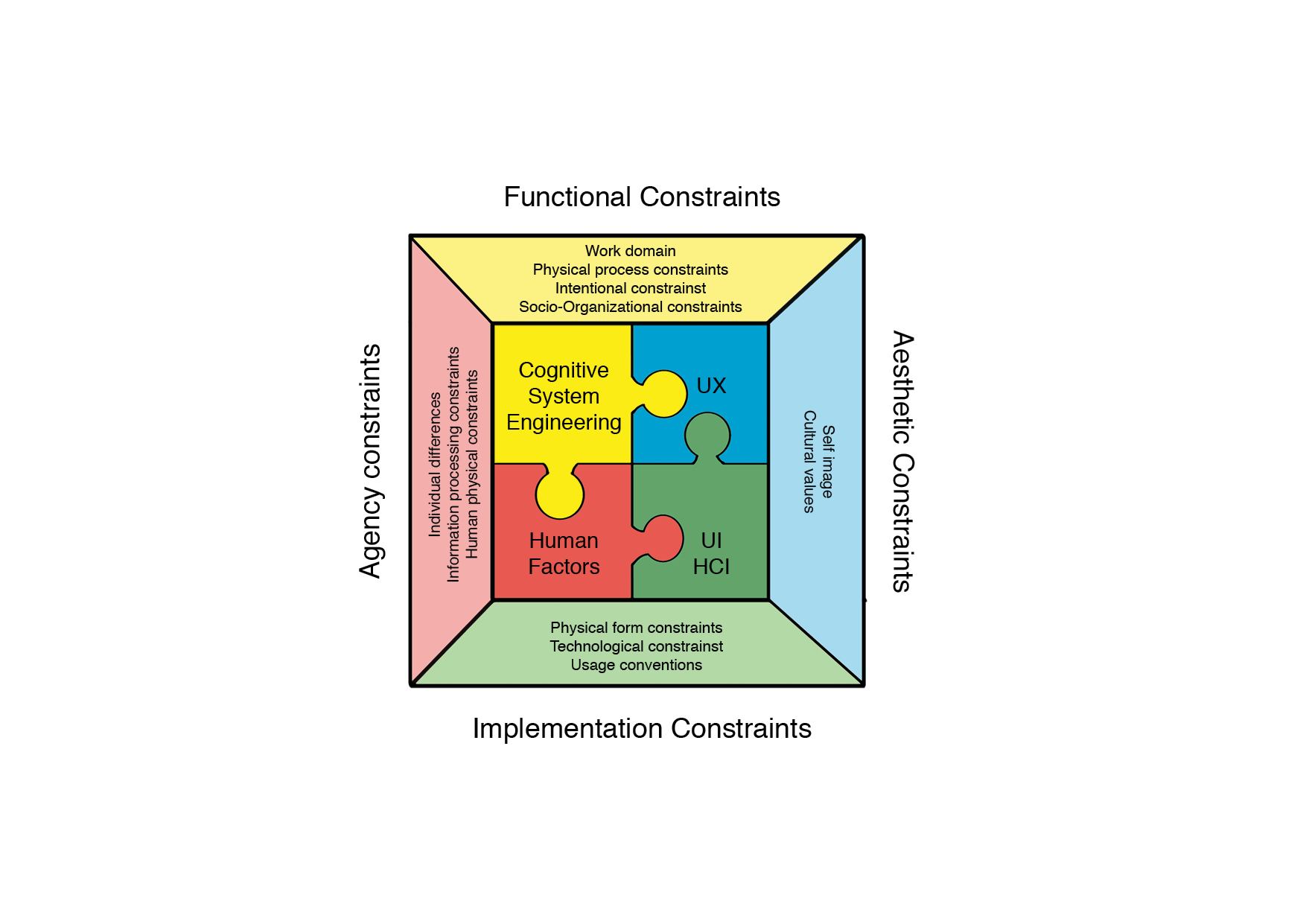
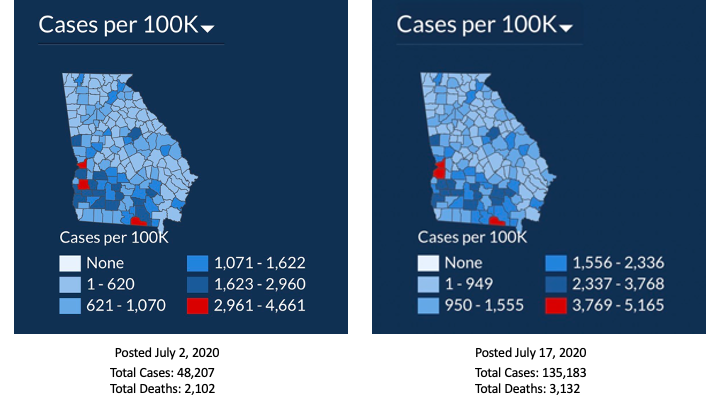
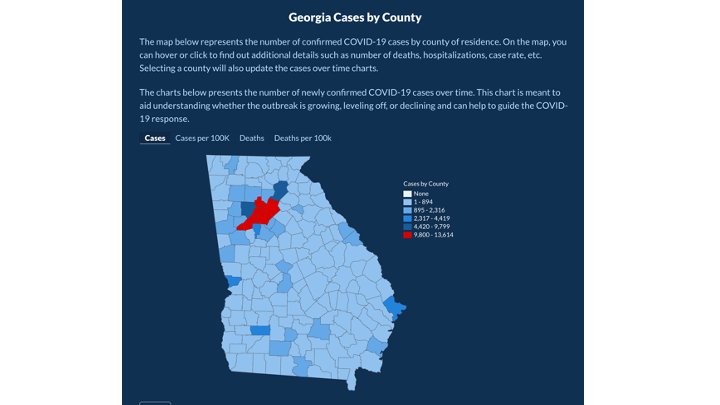
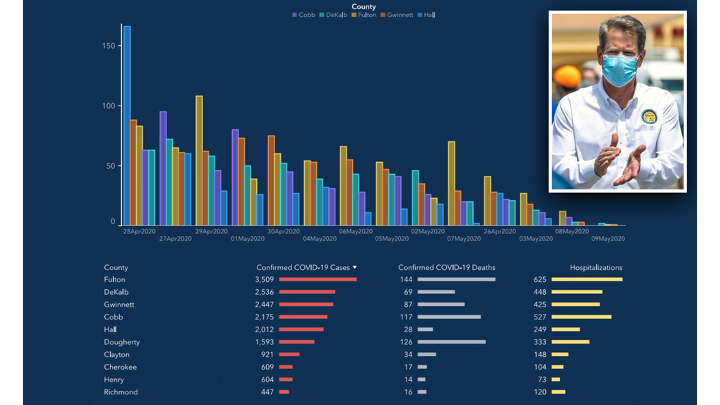


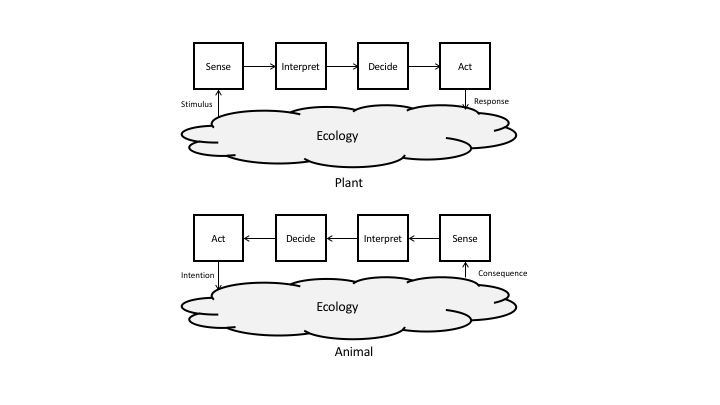 Ever since the Cybernetic Hypothesis was introduced to Psychology, there has been greater appreciation of the "intentional" nature of cognitive systems. Yet, despite this awareness, causal (or stimulus-response) forms of explanation continue to dominate the way many people think about how humans (and other animals) process information. For example, most cognition texts begin with sensation and then follow 'stimulation' through successively deeper levels of processing (perception, decision-making ...).
Ever since the Cybernetic Hypothesis was introduced to Psychology, there has been greater appreciation of the "intentional" nature of cognitive systems. Yet, despite this awareness, causal (or stimulus-response) forms of explanation continue to dominate the way many people think about how humans (and other animals) process information. For example, most cognition texts begin with sensation and then follow 'stimulation' through successively deeper levels of processing (perception, decision-making ...).